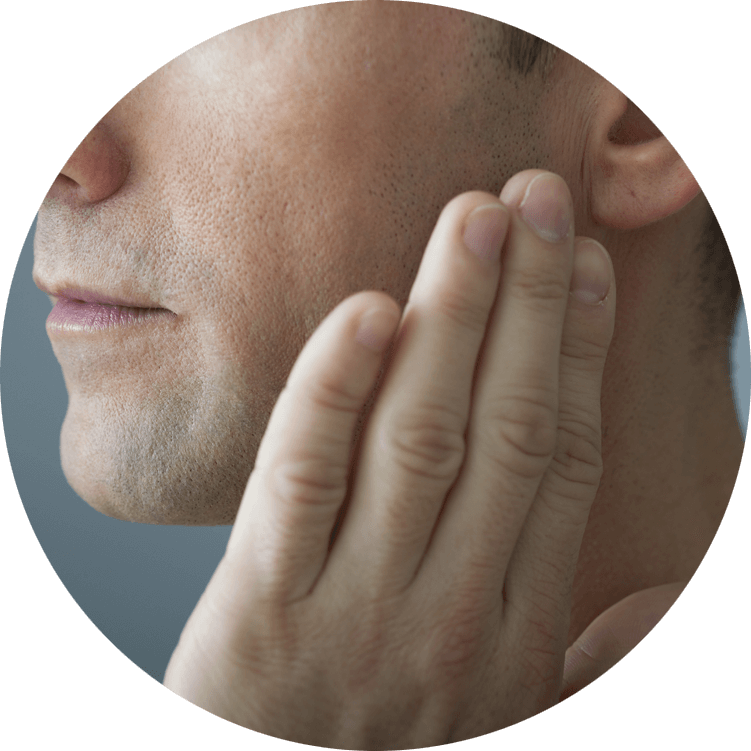
TMD often causes severe pain and discomfort and can be temporary or last many years. But it can be treated.
Dr. Shalaby will review your case and recommend a range of possible medical treatments, including dental splints, Botox injections, physical therapy, prescription medications, and in severe cases, surgery.

- Dr. Shalaby understands musculoskeletal disorders (affecting muscle, bone and joints) and is trained in treating pain conditions.
Request a FREE Video Consult Today

What are the causes of TMD?
Temporomandibular joint and muscle disorders, commonly called “TMD” (and sometimes mistakenly called TMJ), are a group of conditions that cause pain and dysfunction in the jaw joint and the muscles that control jaw movement. We don’t know for certain how many people have TMJ disorders, but some estimates suggest that over 10 million Americans are affected. The condition appears to be more common in women than men.
For most people, pain in the area of the jaw joint or muscles does not signal a serious problem. Generally, discomfort from these conditions is occasional and temporary, often occurring in cycles. The pain eventually goes away with little or no treatment. Some people, however, develop significant, long-term symptoms.
We don’t know what causes TMD. Dentists believe symptoms arise from problems with the muscles of your jaw or with the parts of the joint itself. Injury to your jaw, the joint, or the muscles of your head and neck — like from a heavy blow or whiplash — can lead to TMD.
Other causes include:
- Grinding or clenching your teeth, which puts a lot of pressure on the joint
- Movement of the soft cushion or disc between the ball and socket of the joint
- Arthritis in the joint
- Stress, which can cause you to tighten facial and jaw muscles or clench the teeth

